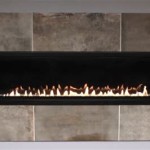Small Living Room Designs With Fireplace
The integration of a fireplace into a small living room presents a unique design challenge. Space optimization becomes paramount when attempting to incorporate this traditionally large feature without overwhelming the room's dimensions. However, with careful planning and clever design choices, a fireplace can become a captivating focal point, adding warmth, character, and a sense of coziness to even the most compact living spaces. The following outlines key considerations for designing small living rooms with a fireplace, focusing on space-saving solutions, style compatibility, and strategic placement.
One of the initial steps in designing a small living room with a fireplace is a thorough assessment of the available space. This assessment should encompass the room's dimensions, existing architectural features, and natural light sources. Understanding these factors will influence the type of fireplace selected, its placement, and the surrounding furniture arrangement. It is crucial to accurately measure the room's length, width, and height, noting the location of windows, doors, and electrical outlets. A detailed floor plan, either digital or hand-drawn, can serve as a valuable tool for visualizing different design options and ensuring that the fireplace and furniture fit comfortably within the space.
Furthermore, consider the room's intended use. Is it primarily for relaxation, entertainment, or both? The answer to this question will influence the type of furniture selected and its proximity to the fireplace. For example, a living room designed for relaxation might prioritize comfortable seating and soft lighting, while a living room designed for entertainment might require more flexible seating arrangements and a larger television screen.
Selecting the Right Fireplace Type
Choosing the appropriate fireplace type is critical for maximizing space and achieving the desired aesthetic. Traditional wood-burning fireplaces, while aesthetically appealing, often require significant space for the firebox, chimney, and hearth. In a small living room, these elements can quickly dominate the space, making the room feel cramped and cluttered. Therefore, alternative fireplace options that are more space-efficient and adaptable to smaller settings should be considered.
Electric fireplaces offer a versatile and practical solution for small living rooms. They require no venting, making them easy to install in almost any location. Electric fireplaces come in a variety of styles, from traditional mantel designs to sleek, modern wall-mounted units. They also offer adjustable heat settings, allowing for year-round enjoyment without overheating the room. Some electric fireplaces even include realistic flame effects that mimic the ambiance of a traditional fire.
Gas fireplaces provide a balance between the ambiance of a real flame and the convenience of electric models. They require a gas line connection, but they offer more realistic flame patterns and higher heat output than electric fireplaces. Gas fireplaces can be installed in a variety of configurations, including direct-vent models that vent directly through an exterior wall, eliminating the need for a bulky chimney. Consider a corner gas fireplace for a unique space-saving solution maximizing a typically underutilized area.
Ethanol fireplaces are another ventless option that can be a good choice for small living rooms. They burn clean ethanol fuel, producing real flames without smoke, ash, or soot. Ethanol fireplaces are available in a wide range of designs, from tabletop models to wall-mounted units, offering flexibility in placement and style. However, it's important to note that ethanol fireplaces typically provide less heat than electric or gas models.
Optimizing Fireplace Placement and Design
The placement of the fireplace is paramount in a small living room. A strategic location can create a focal point without sacrificing valuable floor space. Consider the room's layout and traffic flow when determining the optimal placement. Avoid placing the fireplace in a location that obstructs doorways or walkways.
Corner fireplaces are an excellent solution for maximizing space in small living rooms. By positioning the fireplace in a corner, it occupies an area that would otherwise be difficult to utilize for furniture placement. A corner fireplace can also create a natural focal point, drawing the eye to the corner of the room and making the space feel larger. It is important to balance the corner fireplace with other elements in the room like artwork or a large plant on the opposite side to ensure visual equilibrium.
Wall-mounted fireplaces are another space-saving option that can be particularly effective in small living rooms. These fireplaces are mounted directly onto the wall, freeing up valuable floor space. Wall-mounted fireplaces are available in a variety of styles, from contemporary to traditional, allowing for seamless integration into the room's overall design.
Recessed fireplaces, also known as built-in fireplaces, are integrated directly into the wall, creating a seamless and streamlined look. These fireplaces require more extensive construction but offer a highly customized and space-efficient solution. Recessed fireplaces can be designed to accommodate various fuel types, including electric, gas, and ethanol.
When it comes to the fireplace surround, opt for minimalist designs that don't overwhelm the space. A simple mantel or a clean tile surround can enhance the fireplace's aesthetic without adding unnecessary bulk. Avoid ornate or overly decorative designs that can make the room feel cluttered. The surround's color palette is also crucial; lighter colors tend to make the space feel more open and airy, while darker colors can create a more intimate and cozy atmosphere.
Furniture Arrangement and Decor Considerations
Selecting the right furniture and arranging it strategically is essential for creating a functional and comfortable small living room with a fireplace. Opt for multi-functional furniture pieces that can serve multiple purposes. For example, a storage ottoman can provide seating, storage, and a place to rest your feet. A sofa with built-in storage can help to declutter the room and maximize space. In a small living room, it’s important to choose furniture that fits the scale of the room. Oversized furniture will make the room feel cramped, so opt for smaller, more streamlined pieces.
When arranging furniture, consider the fireplace as the focal point. Position the seating to face the fireplace, creating a comfortable and inviting conversation area. Avoid blocking the fireplace with furniture, as this will diminish its visual impact and make the room feel less inviting. The coffee table choice is important here, consider a round or oval table as it allows for easier navigation in a tight space.
Utilize vertical space to maximize storage and display possibilities. Install shelves or cabinets above the fireplace to store books, decorative items, or electronics. Vertical storage solutions can help to declutter the room and create a sense of height. Wall-mounted artwork can also help to draw the eye upward, making the room feel larger. When choosing artwork, select pieces that complement the fireplace's design and the room's overall aesthetic.
Lighting plays a crucial role in creating a warm and inviting atmosphere in a small living room with a fireplace. Supplement the fireplace's warm glow with ambient and accent lighting. Use table lamps, floor lamps, and sconces to create layers of light that enhance the room's ambiance. Dimmable lighting allows for adjusting the brightness to suit different moods and activities. Avoid using harsh overhead lighting, as it can make the room feel sterile and unwelcoming. String lights can also be added above the fireplace to offer a magical and soft glow.
Rugs are a useful tool for defining the seating area and adding warmth and texture to the room. Choose a rug that is large enough to anchor the furniture and create a cohesive look. A rug with a bold pattern or color can add visual interest to the room, while a neutral rug can provide a more subtle backdrop. Ensure that the rug complements the fireplace's design and the room's overall color scheme.
Color selection is a critical component of small space design. Light and neutral colors, such as white, beige, and gray, can make a small living room feel more open and spacious. These colors reflect light, making the room feel brighter and more airy. Darker colors can be used to create a more intimate and cozy atmosphere, but they should be used sparingly to avoid making the room feel cramped. Consider using accent colors to add pops of visual interest and personality. Pillows, throws, and artwork can be used to introduce accent colors without overwhelming the space.
Ultimately, designing a small living room with a fireplace requires careful planning, thoughtful design choices, and a commitment to maximizing space. By selecting the right fireplace type, optimizing its placement, and arranging furniture strategically, it is possible to create a functional, comfortable, and visually appealing space that embodies warmth and style. Remember that editing and decluttering are essential for maintaining a sense of spaciousness. Regular decluttering will prevent the small space from feeling overwhelming and ensure that the fireplace remains the focal point of the room.

Fireplace Design Ideas For Your Home Designcafe

16 Ideas For Living Room Layouts With A Fireplace Modsy Blog Narrow Decor Livingroom Layout

11 Appealing Living Room Designs With A Fireplace

15 Small Living Room Design Ideas You Ll Want To Steal

Small Living Room Ideas That Defy Standards With Their Stylish Designs Design Rooms Cozy

40 Best Fireplace Décor Ideas Mantel

48 Adorable And Cozy Neutral Living Room Design Ideas Matchness Com Livingroom Layout Family Rooms Designs

How To Arrange A Living Room With Fireplace House Of Hipsters

Sprucing Up Your Home S Living Room With Fireplace By Expert

Discover The Charm Of Kellswater In Orange County Ca
Related Posts








